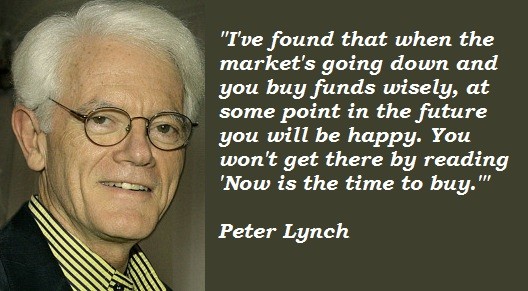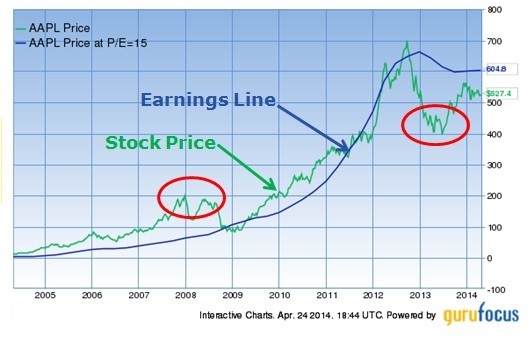Peter Lynch s 6 categories of stocks Asset Plays
Post on: 6 Июль, 2015 No Comment

Asset plays the last piece in the puzzle
GREG HOFFMAN
February 26, 2010
Over the past two weeks weve been on a tour of the way legendary US investor Peter Lynch classified stocks in his classic book, One up on Wall Street. Now, like the end of a game of Trivial Pursuit, well fill in the last piece of pie: asset plays.
The idea with asset plays is to identify untapped or unappreciated assets. These situations can arise for several reasons. A good historical example was Woodside Petroleum in the early part of this decade.
At the time, Woodsides annual profits didnt fully reflect its long-term earnings power. On 5 September 2003 (Long Term Buy $13.40) our resources analyst enthused: Its hard to contain our excitement about the sheer quality of Woodsides assets, and we find dissecting the latest set of entrails (accounts) far less revealing than thinking about how things may play out at Woodside over the next five to 10 years or more.
He was right, and those who followed his advice have so far more than tripled their money. Yet there was no magic involved. Woodsides enormous reserves and long-term contracts were there for all to see. But you needed to look past the then rather meagre profits and make an investment in the future potential of these assets.
Recency bias
Its easy to fall victim to recency bias in the sharemarket; placing far too much emphasis on the most recent financial results and not focusing on where a business is heading long term. Sometimes an asset play is plain enough to see but investors, for whatever reason, choose to ignore it. In the case of bombed-out SecureNet it was because everyone had sworn off tech stocks.
On 26 July 2002 (Buy $0.81), we pointed out that, SecureNet has an estimated $90-$92m cash in the bank, very little debt and 76m shares on issue. That means that were the company to return this cash to shareholders, each share would entitle the holder to about $1.18. Thats 46% above the current market price. So, as long as the company isnt burning too much cash and management doesnt waste the money, at these prices it looks like a no-brainer.
The company was taken over 12 months later by American group beTRUSTed at more than $1.50 per share, fully valuing the groups cash plus its IT security business. SecureNet was a classic asset play in the tradition of Benjamin Graham (author of our companys namesake, The Intelligent Investor in 1949).
Graham was a legendary investor and teacher (his most famous student being Warren Buffett) and, among other strategies, advocated buying stocks when they were available at less than their net cash assets (their cash balance less all liabilities) as SecureNet was.
RHG is a more recent example. Having steered our members clear of what proved to be a disastrous float, we ran the numbers as the stock price plummeted during the credit crisis and a clear picture began to emerge.
With a healthy portion of the groups multi-billion dollar loan book financed in the boom times by income-hungry funds at fixed margins, RHG was set to make hundreds of millions in profit as these loans were repaid. By our calculations, these profits would bring the groups total value to somewhere close to $1 per share.
At the depths of despair in June 2008, RHG shares changed hands for less than 5 cents each (several of our members report being happy buyers on that very day). That valued the company at less than $20m; an astonishing figure for a group that not two months later, would report a full year profit of $125m.
The stock now trades north of 60 cents and was a wonderful holding to have through early 2009 as it soared while most other stocks sank. And thats the beauty of a well-selected asset play; under the right circumstances it can offer a degree of protection to your portfolio.
Summing it up

That wraps up our practical introduction to Peter Lynchs six stock categories;
- slow growers,
- stalwarts,
- fast growers,
- cyclical,
- turnarounds and
- asset plays.
These are only a guide, as companies wont always fit neatly into a single category, and the same company may move through several categories over the course of its life.
The biggest risk for investors is mis-categorising a stock. Buying a stock which you think is a fast grower, for example, only to find out a couple of years down the track that it is really a cyclical, is a chastening experience. And your own life situation and risk tolerance should dictate the weightings of each category in your portfolio.
If youve found these distinctions helpful, you might find it worthwhile heading to the source, Lynchs easy-to-read One Up on Wall Street, which is number two on the reading list we provide to members of The Intelligent Investor when they first join up.
Next week Ill take you through some of the other books on that list. Theyre a great education.
This article contains general investment advice only (under AFSL 282288).
Greg Hoffman is research director of The Intelligent Investor which provides independent advice to sharemarket investors
Health is Wealth














